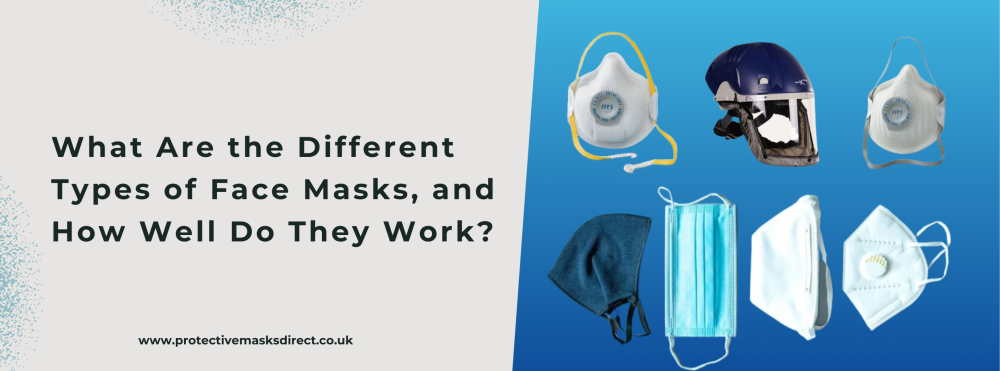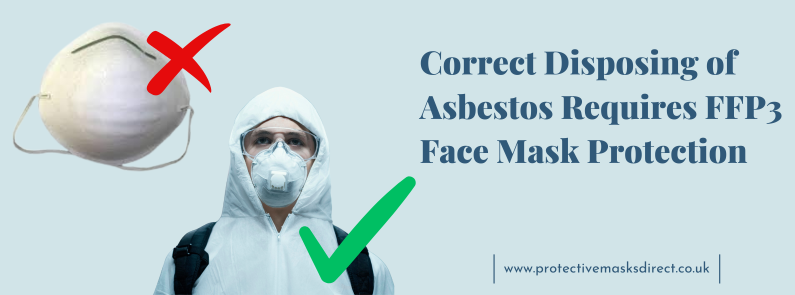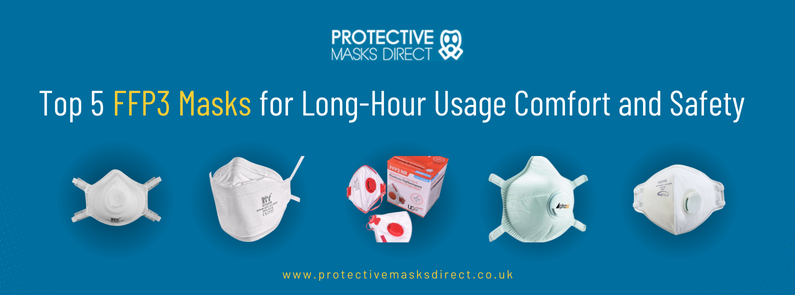
Face masks can be anything that covers your nose and mouth with a sole purpose: to reduce the risk and spread of infectious disease. So, if you are using a cloth as a face covering, then you are using a face mask. However, can a single piece of cloth provide you with the necessary protection required to protect yourself from airborne diseases and harmful particles?
Definitely not! Different industries and different environments come with varied risk levels, and a variety of face masks are available in the market to provide protection against harmful particles in the air. Let’s understand the different types of face masks that are available and which one is perfect for which environment.
Types of Face Masks
Let’s look at the different types of face masks, how they work, and where they can be used:
1. N95 Respirators
N95 masks are tight-fitting respirators that filter out at least 95% of airborne particles, including viruses, bacteria, and pollutants. The “N” stands for non-oil proof, meaning that the mask can be used in a work environment if no oil-based particles are present. Made with tough yet flexible electrostatic non-woven propylene fiber, these masks have 95% efficiency. Particles of a minimum size of 0.3 microns and large droplets will not pass through these masks, making them an important part of the personal protection equipment (PPE) kit.
- Best For: High-risk settings like hospitals, crowded public places, and environments with high pollution levels.
- Pros: It offers excellent protection due to its high filtration efficiency and snug fit. It protects against both large droplets and fine airborne particles.
- Cons: Not the most comfortable for long-term wear, as they can be tight around the face. They have limited availability during times of high demand, and they’re typically single-use.
2. Surgical Masks
Surgical masks are loose-fitting disposable masks often worn in healthcare settings to block large respiratory droplets, splashes, and sprays. They aren’t tight-fitting but still cover the nose and mouth. They have a three-layer design, and each layer has a specific purpose—the outer layer resists droplets, the middle layer melts blown materials like a filter, and the inner layer captures the moisture from breath.
These masks are suitable for everyday use in public spaces when physical distancing is not possible. Healthcare professionals also use them during routine procedures with low risk and exposure.
- Best For: Short-term use in lower-risk environments, like routine visits to moderately crowded places.
- Pros: They are lightweight, disposable, and affordable. They are also more breathable and comfortable for extended wear than N95 masks.
- Cons: Not effective at filtering out small airborne particles, and gaps can allow unfiltered air to enter.
3. Cloth Masks
Cloth masks are made from various fabrics and can be single-layered or multi-layered. They are reusable, eco-friendly, and available in numerous styles. They are usually made of tightly woven, breathable fabric like cotton. The fit of the mask is essential to making it more effective, and it should cover the mouth, nose, and chin snugly. These masks should be washed after every use to maintain hygiene.
- Best For: Daily use in low-risk environments, like outdoor spaces where social distancing is possible.
- Pros: They are reusable, eco-friendly, and customizable for better comfort and style. Layering (with two or more layers) can significantly increase their filtration.
- Cons: Limited protection compared to medical-grade masks. Also, the filtration level depends on the material and layers, with single-layer masks offering minimal protection. Cloth masks also require regular washing.
4. FFP Masks (FFP2 and FFP3)
These European-standard masks are similar to N95 respirators (Chinese equivalent), with FFP2 filtering at least 94% of airborne particles and FFP3 filtering 99% or more. FFP2 and FFP3 masks also have multi-layered compositions, which include a filter layer to capture particles and a moisture-resistant outer layer. They fit the face closely so that the air leaks from the sides of the mask are minimal. In this case, most of the inhalation air will be filtered. Most FFP masks come with head straps rather than ear loops, which also makes them fit better.
- Best For: High-risk environments, especially where close contact with infected individuals or airborne hazards is expected. This may include healthcare settings or industrial sites.
- Pros: They have high filtration efficiency thereby, considered excellent for high-risk settings.
- Cons: They tend to be more expensive and less available than standard surgical or cloth masks. Due to their tight fit, they can be uncomfortable to wear for extended periods.
5. Face Shields
Face shields are clear plastic shields that cover the entire face to block larger droplets, splashes, and sprays. They don’t filter air but act as a physical barrier. This is made up of a curved transparent plastic or acrylic sheet from the forehead to below the chin and across the width of the face. Face shields have an adjustable headband or strap, and most have foam padding on the forehead for comfort. Some models feature anti-fog coatings for a clearer view, which is especially useful when working in very wet conditions.
- Best For: This mask provides additional eye protection, which is useful for healthcare workers performing procedures with a high risk of fluid exposure.
- Pros: Provides full-face coverage, comfortable, and reusable.
- Cons: Not a substitute for face masks, as they don’t filter out airborne particles.
6. Powered Air-Purifying Respirators (PAPRs)
PAPRs are advanced respirators that use a battery-powered fan to push air through HEPA filters, providing a constant supply of purified air. These are commonly used in healthcare during high-risk procedures. High-efficiency filters can be used in PAPRs that capture as much as 99.97% of particles with sizes of up to 0.3 microns, such as airborne pathogens, dust, and toxic gases. It would all depend upon the type of filter fitted. PAPRs offer protection against specific chemical gases, vapors, or biological hazards.
- Best For: Healthcare settings, especially during procedures involving aerosol-generating activities.
- Pros: Superior protection against all airborne particles and reduces breathing resistance due to powered airflow.
- Cons: Expensive, bulky, and generally used in specialized medical settings, requiring regular filter changes and maintenance.
How Each Mask Type Measures Up
Each mask offers a different level of protection. Here’s a quick comparison to understand which masks provide the best filtration and comfort:
| Mask Type | Filtration Efficiency | Protection Level | Comfort | Reuse Potential |
|---|---|---|---|---|
| N95 | 95% of particles (0.3 microns) | High | Moderate | Limited reuse (disposable) |
| KN95 | 94-95% of particles | High | Moderate | Limited reuse (disposable) |
| Surgical | Blocks large droplets | Moderate | High | Single-use |
| Cloth | Varies (20-80% efficacy) | Low-Moderate | High | Reusable |
| FFP2/FFP3 | 94-99% of particles | High | Moderate | Limited reuse |
| Face Shield | None for airborne particles | Low (droplet protection only) | High | Reusable |
| PAPR | 99.9%+ of particles | Very High | Low | Reusable (with replacement filters) |
Conclusion
Choosing the right mask isn’t just about protection; it’s about comfort, face fit, and making a mindful decision for both personal health and environmental impact. We hope that this guide has helped you select the best mask for any situation and ensure its effective use. If you're wondering where to buy a perfect mask, check out Protective Masks Direct and contact us for more information!




